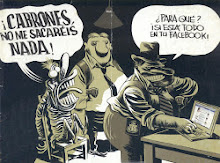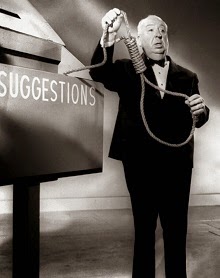S. Subramanian
The Locked-Room Mystery is a specific example of the possible crime derived from impossible circumstances — in this particular case, a crime (usually murder) committed in a sealed room without apparent egress into or exit from it, or within a confined space containing a finite number of persons. An economist dwells on a few of his favourite locked-room short stories.
Why would a retired economist like me be interested in some sub-genre of crime fiction? Well, some economists are “theorists”, and some theorists work on a branch of the science called “Social Choice Theory”, which is a body of thought that lies at the intersection of economics, politics and philosophy. Social Choice Theory is concerned with the problem of deriving meaningful procedures for the aggregation of individual preferences over alternative states of affairs into a collective or “social” preference. “Majority voting” is an example of such an aggregation mechanism, and is a subject to which early contributions were made, in the 19th century, by an Oxford University lecturer of logic and mathematics called Charles Lutwidge Dodgson, more familiarly known by his pen-name Lewis Carroll. The architect of modern Social Choice Theory is Kenneth Arrow, an economist from Stanford University and a Nobel Laureate. Arrow was interested in characterising the class of preference aggregation mechanisms which would satisfy some innocuous properties, such as allowing for diversity of individual preferences, respecting unanimity of preferences, and disallowing dictatorship. His mathematical reasoning led Arrow to a stunning result — namely that there exists no preference aggregation procedure (including majority voting) that satisfies the set of seemingly reasonable properties he demanded of the aggregation mechanism.
The Arrow result is a celebrated example of an “Impossibility Theorem”, a species of reasoning in mathematical logic which suggests that a combination of individually appealing axioms that might be expected to result in a plausible and constructive proposition actually ends up, most counter-intuitively, delivering a logical impossibility. (Perhaps the most celebrated such result in the history of mathematics is due to the great mathematician Kurt Gödel, the author of Gödel's Result “on formally undecidable propositions of Principia Mathematica and Related Systems.”)
What does any of this have to do with crime fiction? Well, in a sense, the mystery story does the opposite of what an Impossibility Theorem does: the latter suggests that a combination of plausible circumstances can sometimes shockingly yield an impossible outcome, while the former (when it is well crafted) suggests a combination of virtually impossible circumstances under which not just a possible, but a shockingly very real, crime is revealed to have been committed. Both varieties of intellectual exercise challenge the logical faculty of the analyst, and can — given a certain mentality which some economists share with crime-story aficionados — be a source of great fun. The Locked-Room Mystery is a specific example of the possible crime derived from impossible circumstances — in this particular case, a crime (usually murder) committed in a sealed room without apparent egress into or exit from it, or within a confined space containing a finite number of persons which is subjected to continuous monitoring of who comes in and who goes out. Restricting myself only to the short-story format, let me mention six of my personal Locked-Room Mystery favourites.
In chronological order of publication, at the top of the list I should place Arthur Conan Doyle's The Speckled Band, first published in 1892 in the Strand Magazine. Sherlock Holmes, in this story, investigates the sudden and inexplicable death of a young lady in a room locked from the inside and equipped with windows that are barred and shuttered from human passage. In the process, he prevents a second possible murder, by unravelling a scheme of deadly evil and horror.
A second outstanding story is GK Chesterton's The Secret Garden, published in 1910 in the collection The Innocence of Father Brown. The atmospherics in the story — of brooding menace, of palpable evil, of monstrous intimations of grotesqueries — are virtually unrivalled in the annals of crime fiction. The discovery of a decapitated corpse in the garden of a house in which guests have assembled for a party is followed by this meekly uttered observation of the detective-priest Father Brown's: “I say, there are no gates to this garden, do you know.”
In 1914 there appeared what seems to be a little-known story called Death in the Excelsior. It relates the strange case of a man found suddenly dead in the locked room of an English boarding house called “The Excelsior”. It turns out that the cause of death is murder by poisoning. The author of the story is a most unlikely one — although he loved detective fiction, was a personal friend and admirer of Conan Doyle's (with whom he sometimes turned out to play cricket), and wrote occasional parodies of crime stories, including a delectable spoof on Sherlock Holmes in a 1903 issue of Punch. You can find the story on the web in the Gutenberg e-book Death in the Excelsior and Other Stories. The author? PG Wodehouse!
In 1933, “Sapper”, the creator of Bulldog Drummond (a progenitor of Ian Fleming's James Bond), brought out a collection of mystery stories titled Ronald Standish, featuring the eponymous amateur detective. My Hodder and Stoughton edition proclaims the author to be “the ‘inimitable’Sapper”. “Inimitable”, perhaps, but apparently not “non-imitating”: at least three of the stories in the collection draw fairly liberally on corresponding tales in the Sherlock Holmes canon! Notwithstanding, the collection has an engaging locked-room story in it called The Mystery of the Slip-Coach, in which a corpse with a bullet through the head is found in the compartment of a train. The compartment, with both door and window shut, is in a “slip-coach” that has no connecting corridor linking with the rest of the train. The solution of the murder turns on the remains of a raw egg found in the compartment.
Two acknowledged masters of the Locked-Room Mystery are John Dickson Carr (an American) and Edmund Crispin (an Englishman). The latter wrote a series of crime novels and short stories featuring, as his detective, an Oxford don of English Literature, Gervase Fen. One of these stories — The Hunchback Cat — is a tiny and startlingly diabolical locked-room mystery involving death by a slit throat and aided, in its solution, by the presence of a tortoise-shell cat at the scene of the crime. The story was originally published, in 1954, in the pages of a newspaper — the London Evening Standard. Those, to coin a phrase, were the days!
Dickson Carr collaborated with Conan Doyle's son Adrian on a collection of stories — The Exploits of Sherlock Holmes, published in 1954 — based on the many tantalising references made to various of Holmes' cases in the original canon. One of these stories (written almost entirely by Doyle, fils) is titled The Adventure of the Sealed Room, and deals with the suspected madness of a Colonel Warburton. It transpires, however, that the Colonel is a victim not so much of madness as of murder, which happens in a sealed room. The solution of the crime, it turns out, depends on how one would wield one's cutlery in order to consume oysters. Intrigued? Then read the story!
And read the other stories too, if you haven't already read them. It should keep you out of mischief, and, with luck, save you from being arrested for sedition by our zealous government.
The writer is a retired Professor of Economics.


































0 comentaris:
Publica un comentari a l'entrada